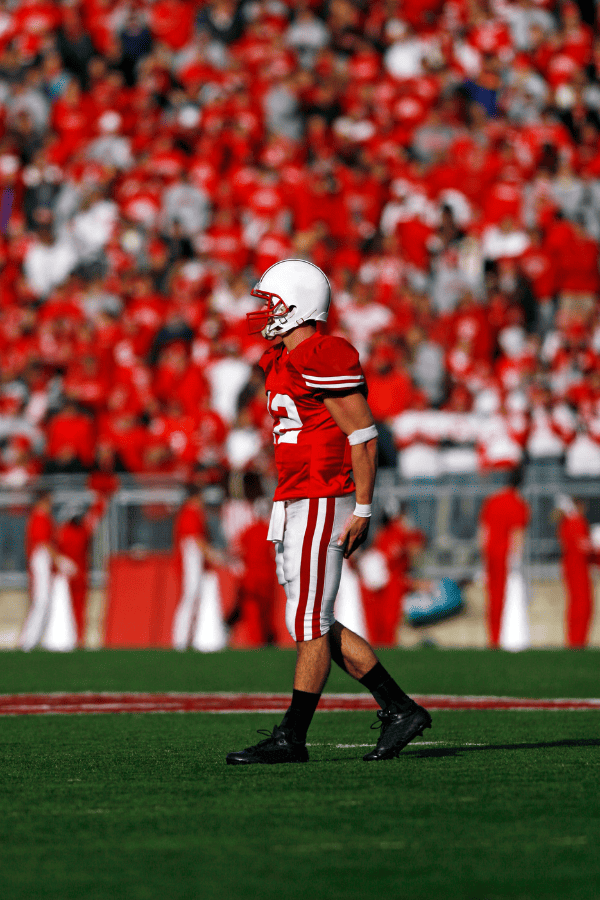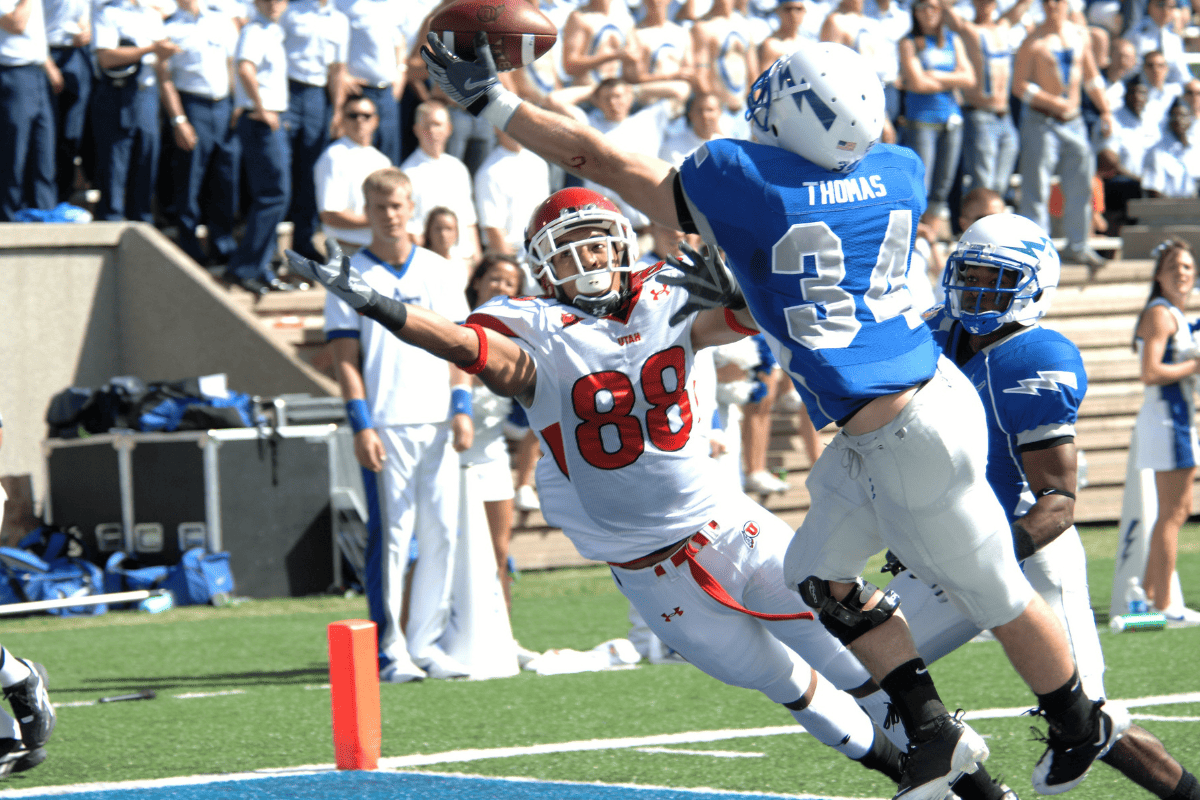Cornerback vs Safety: What’s the Difference?
In the game of football, understanding the various positions on the field is crucial for both players and fans alike. Two of the most pivotal roles in the defensive lineup are the cornerback and the safety.
At first glance, these positions may seem similar, as both are integral to thwarting the offensive plays of the opposing team from the defensive backfield.
However, the cornerback and safety serve distinct functions, each requiring a unique skill set and strategic mindset. This article aims to demystify these positions, shedding light on their differences and their critical roles in shaping the defense.
Defining the Roles
First things first, let’s define exactly what a cornerback and a safety is.
Cornerbacks: The Agile Guardians of the Sidelines
Cornerbacks are commonly seen as the quick and nimble guardians of the defense team. Their primary role is to cover wide receivers, ensuring these swift opponents don’t catch passes from the quarterback. A cornerback must possess a blend of speed, agility, and sharp reflexes to mirror the movements of the receiver they’re covering.
They are typically positioned near the sideline, ready to engage in one-on-one battles with receivers, making their role both physically and mentally demanding. Their responsibilities don’t end with pass coverage; cornerbacks are also expected to be adept at tackling, especially when run plays find their way to the sideline.
In essence, cornerbacks are the first line of defense against the aerial threats posed by the offense.
Safeties: The Strategic Last Line of Defense

Safeties, often regarded as the team’s last line of defense, play a critical role in both pass and run defense. Positioned further back from the line of scrimmage, safeties have a broader view of the field, allowing them to make strategic plays and anticipate the offense’s movements.
There are two types of safeties: free safeties and strong safeties.
Free safeties are known for their coverage skills, often dropping back to defend against deep passes. Strong safeties, on the other hand, are typically more involved in stopping the run and may line up closer to the line of scrimmage.
Both types of safeties must excel in reading the game, making quick decisions, and providing support to cornerbacks and linebackers. Their ability to adapt and respond to different plays makes them indispensable in a well-rounded defensive strategy.
Physical and Skill Differences
The physical makeup of cornerbacks and safeties often differ, tailored to their specific roles.
Cornerbacks, tasked with shadowing quick and agile receivers, generally possess exceptional speed and agility. They need to accelerate quickly, change direction seamlessly, and maintain close coverage. Height and jumping ability are also crucial for contesting catches.
Safeties, in contrast, tend to have a more versatile build. They are often slightly larger, which aids in tackling and provides an advantage in run support. While still agile, safeties prioritize anticipation and the ability to cover more ground, making a combination of speed and endurance essential.
Skill Set
The skill sets required for cornerbacks and safeties, while overlapping in areas, are distinct in their focus.
Cornerbacks require excellent man-to-man coverage skills, quick footwork, and the ability to react rapidly to the receiver’s movements. They must also have good hands and ball skills for creating turnovers.
Safeties, on the other hand, need a broader skill set. They must be adept at reading the quarterback’s intentions, understanding offensive strategies, and communicating effectively with teammates.
Their skills in zone coverage, along with tackling and interception abilities, are critical. The safety’s role as a communicator and strategist often makes them akin to a field general on defense.
Positional Play and Strategies
On the field, cornerbacks and safeties occupy distinct positions. Cornerbacks line up directly opposite wide receivers, typically near the sidelines, ready for immediate engagement.
They may play in “press” coverage, close to the receiver, or in “off” coverage, giving some space to react to the receiver’s route.
Safeties, positioned further back, can be found near the middle of the field. Their deeper placement gives them a vantage point to observe the quarterback and react to plays, providing coverage support or rushing forward in run defense.
Strategic Roles
Strategically, cornerbacks are primarily responsible for neutralizing the wide receivers, either through man-to-man coverage or as part of a zone defense. They play a critical role in disrupting passing lanes and challenging receptions.
Safeties, with their comprehensive view of the field, are instrumental in recognizing and adapting to the offense’s strategy. They support cornerbacks in deep coverage, assist in covering tight ends or running backs, and play a crucial role in run defense.
The flexibility and strategic thinking of safeties make them key in implementing complex defensive schemes.
Famous Corners and Safeties
There is a long list of hall-of-fame players at both positions, but we just wanted to highlight a couple of the all-time greats at cornerback and safety.
Legendary Cornerbacks
Throughout the history of football, several cornerbacks have stood out for their exceptional skills. Players like Deion Sanders, known for his incredible speed and agility, and Champ Bailey, renowned for his coverage skills and ball-hawking abilities, have set high standards for the position.
These players exemplify the cornerback’s role in shutting down top receivers and making game-changing interceptions.
Legendary Safeties
As for safeties, legends like Ronnie Lott and Ed Reed have left indelible marks on the game. Lott was known for his hard-hitting style and versatility, while Reed’s ball-hawking skills and ability to read the quarterback’s mind made him a perennial threat to offenses.
These players highlight the safety’s role as both a defensive anchor and a playmaker, capable of turning the tide of a game with a single play.
Training and Development
As you might expect, because the roles for these two positions are different, the proper way to train for cornerbacks and safeties is also different.
Training for Cornerbacks
The training regimen for cornerbacks focuses on enhancing their speed, agility, and man-to-man coverage skills. Drills that improve footwork, such as ladder drills and cone drills, are essential. Cornerbacks also work extensively on their reaction time and hand-eye coordination to effectively disrupt passes.
Techniques for effective press and off-coverage are practiced regularly, along with tackling drills to ensure they can bring down opponents when necessary.
Training for Safeties
Safeties undergo a varied training routine to develop their multifaceted role. Emphasis is placed on improving their zone coverage skills and ability to read the game. This involves studying game film to understand offensive strategies and working on communication skills to lead the defensive backfield.
Physical training for safeties includes a mix of speed work and strength training, ensuring they can keep up with fast receivers and effectively tackle larger players.
Choosing the Right Position
When choosing between cornerback and safety, players should consider their physical attributes, skill sets, and preferred style of play.
Those with exceptional speed and man-to-man coverage ability may gravitate towards cornerback, while players who excel in game intelligence, tackling, and enjoy a more varied role might find safety more suitable.
Transitioning Between Positions
Transitioning between cornerback and safety is possible but requires adaptation and skill development. A cornerback moving to safety must enhance their tackling ability and learn to read offensive plays from a deeper position.
Conversely, a safety transitioning to cornerback must focus on man-coverage skills and quick footwork. Both transitions demand an understanding of the nuances of each role and a willingness to adapt.
Conclusion
The roles of cornerbacks and safeties, while often lumped together, are distinctly different in their contributions to the defensive strategy of a football team.
Cornerbacks serve as the agile defenders focused on neutralizing wide receivers, relying on speed and coverage skills. Safeties, as the strategic anchors, offer versatility in both pass and run defense, combining physicality with game intelligence.
Both positions are crucial in their own right, each bringing a unique set of skills and roles that are indispensable to a well-functioning defense.

